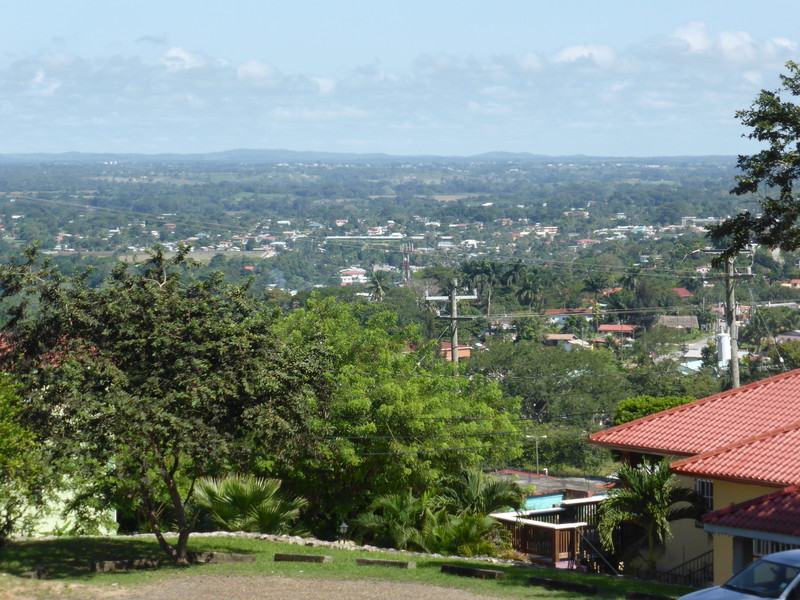
It took a while for us to warm to the charms of San Ignacio, because first impressions last. We got there in the end, but it was a bit of a long road... literally.
It didn't help that we tackled the long journey from Caye Caulker to San Ignacio the day after our dive trip the Blue Hole, which had completely wiped us out (though in a good way). It started with the water taxi from Caye Caulker to Belize City, which bumped along through the swell, adding sore patches to our sore patches, and the taxi across town to the bus station was pretty rickety and the suspension in the tired old cab had seen far better days, but the most painful part of the whole trip was the music in the bus from Belize City to San Ignacio.
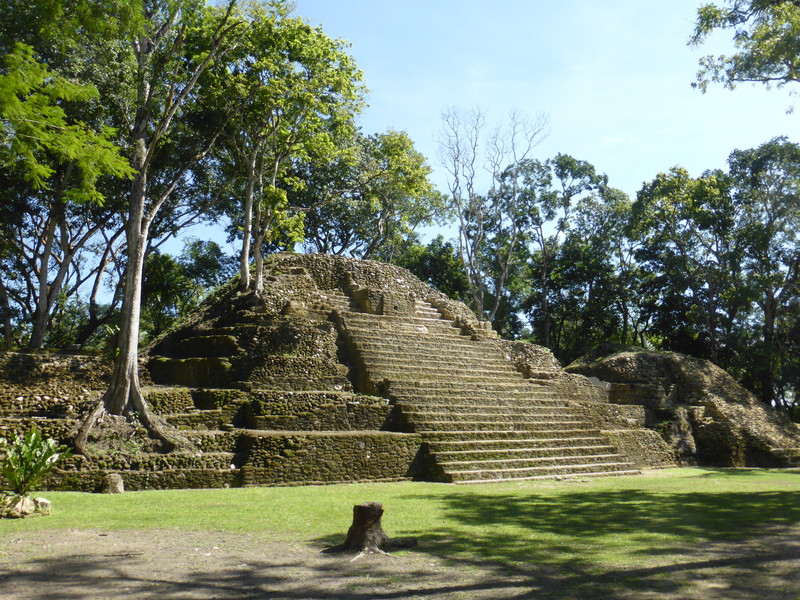
It's a funny thing about developing countries, but their stereos only seem to have one volume setting, and that setting is at least two notches higher than the speakers can cope with. Whether you're in Indonesia or India, Burkina Faso or Belize, the driver is in charge of the music, and he wants you to sit there and listen, so he turns it up to full volume and takes no prisoners, whether it's Southeast Asian pop music, a Hindi film soundtrack or, in the case of the bus out west from Belize City, country and western music of the most dreadful kind.
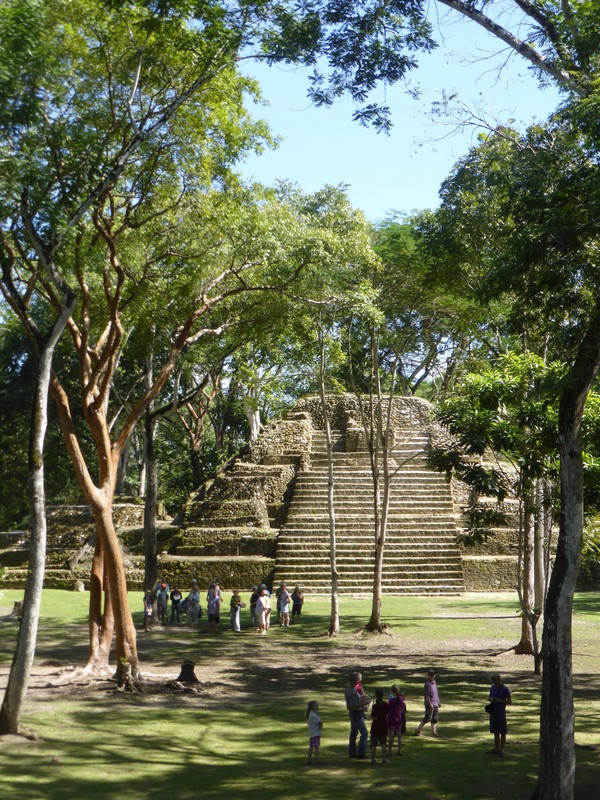
It didn't help that someone else on the bus had brought along their own boom box and was determined to entertain the packed bus with their own mega-mix of Belizean beats, which led to a face-off between the driver and the DJ passenger, with each of them upping the volume until the bus driver comprehensively won with his ear-bursting rendition of Waylon Jennings's 'Mamas, Don't Let Your Babies Grow up to be Cowboys'. Despite this initial win by the driver, the passenger was biding his time, because when things calmed down a bit with some gentler Dolly Parton, he wacked up his ragga beats and took on the driver without flinching, until the latter discovered that his speakers could indeed take just a little more, and turning up Charley Pride's 'Does My Ring Hurt Your Finger', he sent the pretender packing with vibrations that rocked the bus even more than the potholes on the Western Highway.
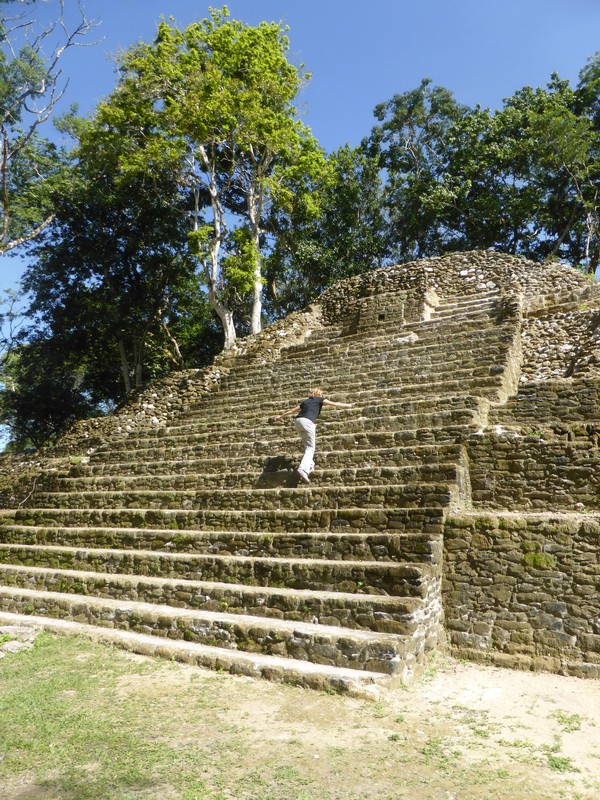
After an hour of aural tennis, Peta had a serious headache and I'd had enough of banal lyrics about cheatin' women and gamblin' men, and when Billy Ray Cyrus's 'Achy Breaky Heart' started up, that pretty much summed up how I felt. Luckily we soon reached Belmopan, the capital of Belize, where most of the passengers got off (including the defeated DJ) and the music switched to insanely loud 1980s power ballads, which was perhaps not the improvement I'd hoped for. As Jennifer Rush screamed about 'The Power of Love' and we bumped our way in the direction of the Guatemalan border, the heavens opened, spitting rain through a broken window and directly into my face, so at least you couldn't see my tears.
Black and Blue
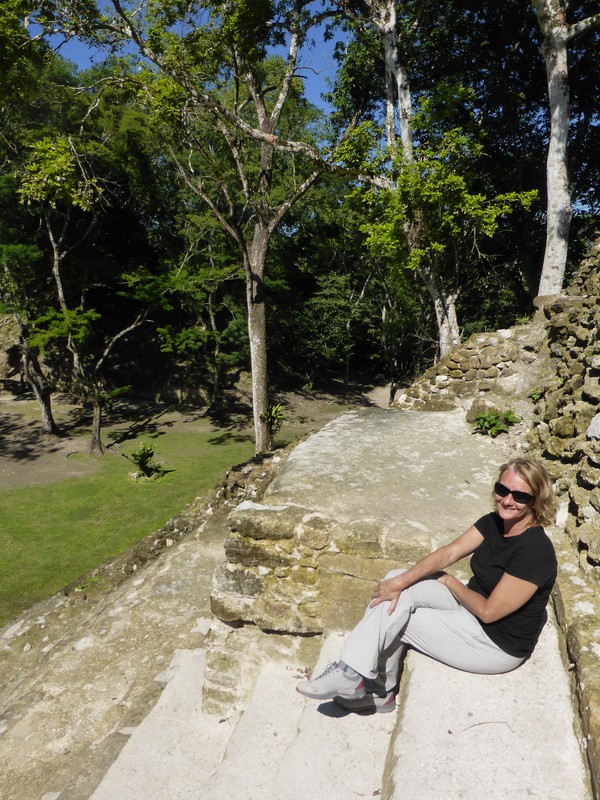
After our stressful arrival in the torrential darkness of Caye Caulker, we didn't fancy splashing around in the rain trying to find a hotel again, so we booked a hotel in advance in San Ignacio. This turned out to be a very good idea, and soon enough the rain had stopped and I was perched on the balcony of the Casa Blanca Hotel, watching the world go by below from the safety of a bottle of Belikin Stout. It was really rather peaceful after two and a half hours of the soundtrack from hell.
So the sudden loud shouts from up the street were a bit of a shock, wrenching me out of my reverie as a lanky black man ran down the street, shouting angry words in Creole and throwing his long arms up in the air in the universal language of fired-up testosterone. He stood on the road opposite the hotel, looking up the hill and shouting, until he calmed down a bit and started loitering with intent instead. He was tetchy, jumping from foot to foot, and clearly wound up; the man at the table selling trinkets by the side of the road suddenly looked extremely busy with his bracelets and necklaces, as the angry black man paced around like a panther patrolling his territorial boundaries.
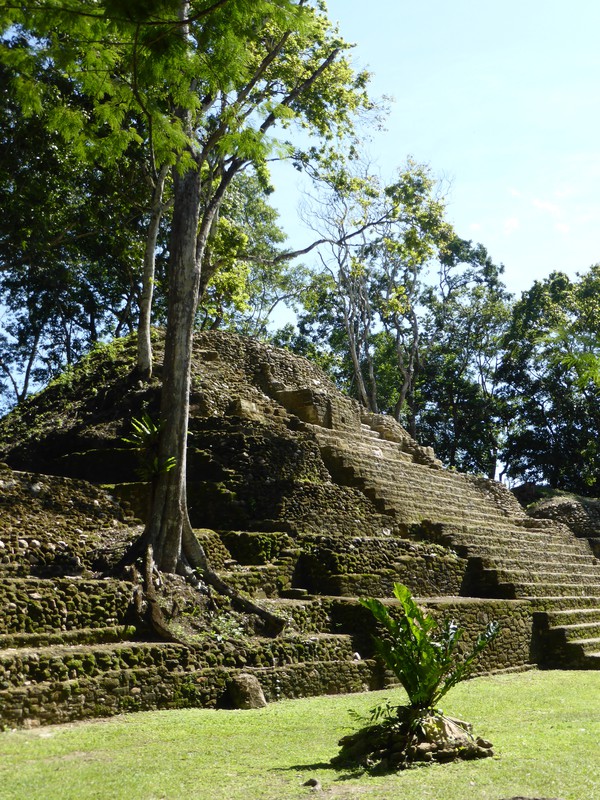
After about five minutes of this, I heard a muffled shouting from up the hill, and the black man yelled, ' You want some? You come on, then,' in a deep bass voice. There were higher-pitched shouts from up the hill, and again he threw his hands up to the sky. Looking behind him, he saw something in a dark side alley and ducked in for a second or two, before coming out shouting.
'Come on then!' he yelled, turning up the hill. 'Let's go. Right now!'
'Yeah, you want some, nigger?' came a Chinese voice from up the road, and three pumped-up Chinese men started running down towards the black man, one of them in the front shouting and pointing. The black man had his right hand tucked behind his back, and as he headed up the street, I could see he'd grabbed a short bit of wood from the alley.
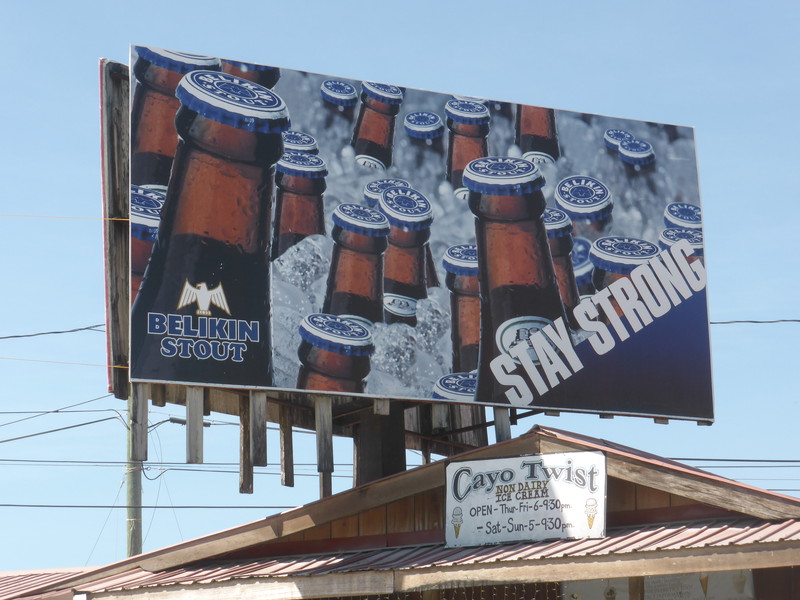
They met in the middle of the street, the Chinese man putting up both fists and trying a side kick, and the black man dodging and biding his time before feinting with his left hand and springing the surprise from his right, smacking the Chinese man on his forearm. A mother and daughter stood frozen on the pavement and cars ground to a halt as the pair traded kicks and punches. And then the black man brought his right hand down and smacked the Chinese man hard on the side of the head, sending him spinning between two parked cars and down onto the pavement on the other side of the road.
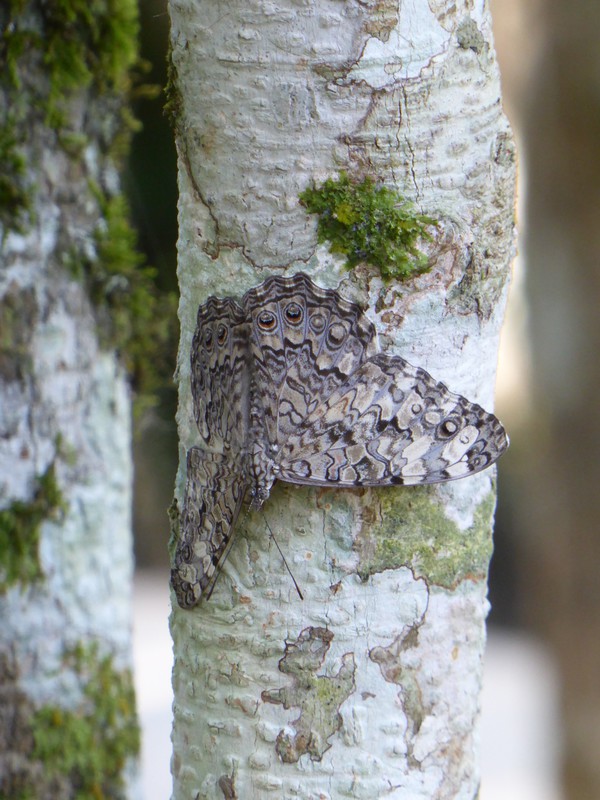
'You want some of this too?' he yelled at one of the other Chinese men, who put up his hands and turned to run. The third Chinese man stood still by his downed friend, unsure what to do as the black man jumped back onto the first Chinese man and smashed him a couple more times in the face before running off down the road, stopping to yell incomprehensible threats at the now totally shell-shocked Chinese. The first Chinese man got up and put a hand to his face, which was gushing blood from a mashed-up nose, and he and his friends stood there, totally confused as the black man shrugged his shoulders aggressively, turned casually away from the scene, lobbed the bit of wood back into the side street and sauntered off as if nothing had happened, while the Chinese men limped back up the street, looking at each other in confusion.
Welcome to San Ignacio. I guess the blacks and Chinese don't get on here, either.
Ruins and Caves
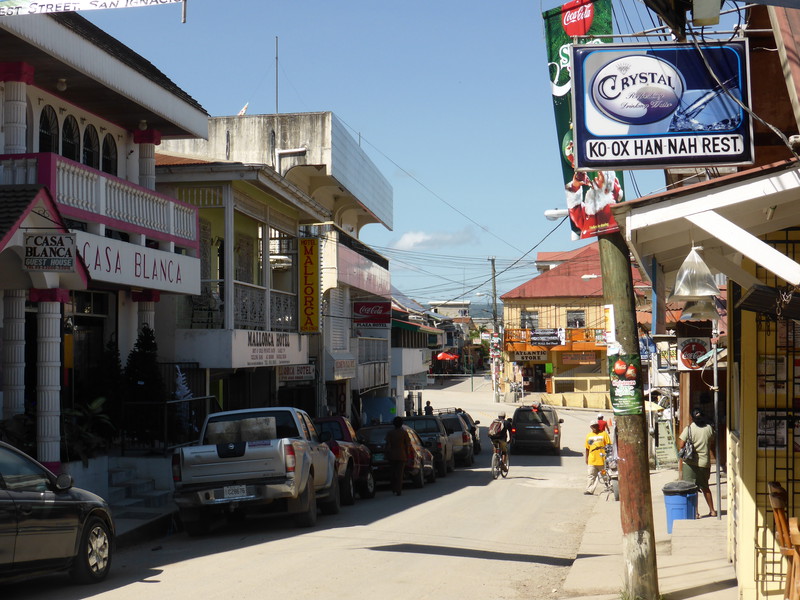
We'd shacked up at San Ignacio in order to visit Actun Tunichil Muknal cave and the Mayan ruins at Caracol, both a couple of hours' drive out of town, but San Ignacio itself has its own set of ruins that are well worth the 30-minute walk out of town. Known as Cahal Pech – Mayan for 'Place of Ticks', which was the name given to the site by the archaeologists who excavated it in the 1950s – it's one of the oldest recognisably Mayan sites in the Belize River valley, dating from around 1200 BC (though it was abandoned in about 900 AD). It was home to an elite Mayan family, and its location on top of a hill above present-day San Ignacio is palatial indeed; most of the buildings date from the end of the occupation, between 600 and 800 AD, but because they're in a crumbling state with gnarly trees growing out of the stonework, it feels a lot more ancient.
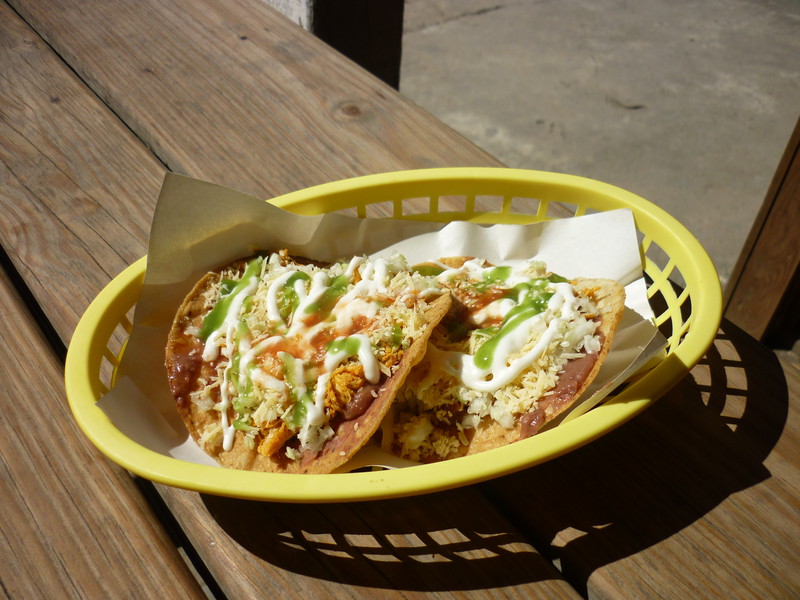
But the best thing about the site is that it's relatively quiet. Sure, small buses of tour groups spill through during the day, but it's off the main tourist trail, and it's easy to shake off the groups of slow-moving Russians and Americans as they follow their tour guides round the site, and if you wait for a few minutes, you'll soon have the site to yourself again. You can pretty much clamber anywhere you like, and the view of the forest canopy from the top of the biggest pyramid, some 25m up, is atmospheric (though you can't quite see out of the forest to the surrounding hills, which is a shame, as the views are lovely on the walk up to the visitor centre).
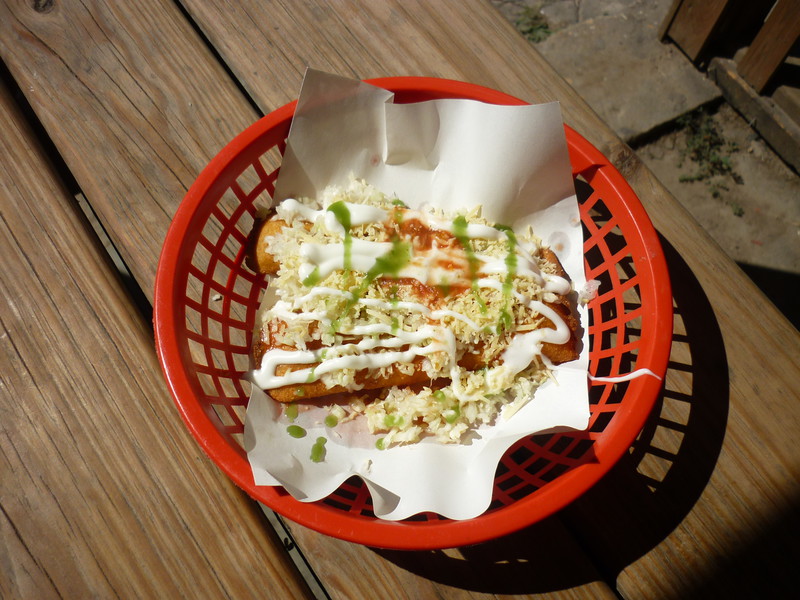
San Ignacio also has some great street food in the form of small stalls along Burns Avenue, where you can pick up some local favourites for a pittance. We munched on panades, which are crispy fried corn pancakes stuffed with a spicy chicken filling and served with grated onion and cheese, three of which will cost you a whopping one Belizean dollar, or about 10p each; we ate tostadas, which are deep-fried tortillas piled high with cheese, onions, beans, sour cream and salsa for a massive 75 Belizean cents each (or 25p); and fried tacos, which are rolled up soft tacos, stuffed with meat and deep fried before being smothered in onions, sour cream and salsa, also 75 Belizean cents each (or 25p). Lunch for two for a couple of quid, including a large Coke and a place to sit on the side of the road... that's got to be worth a go.
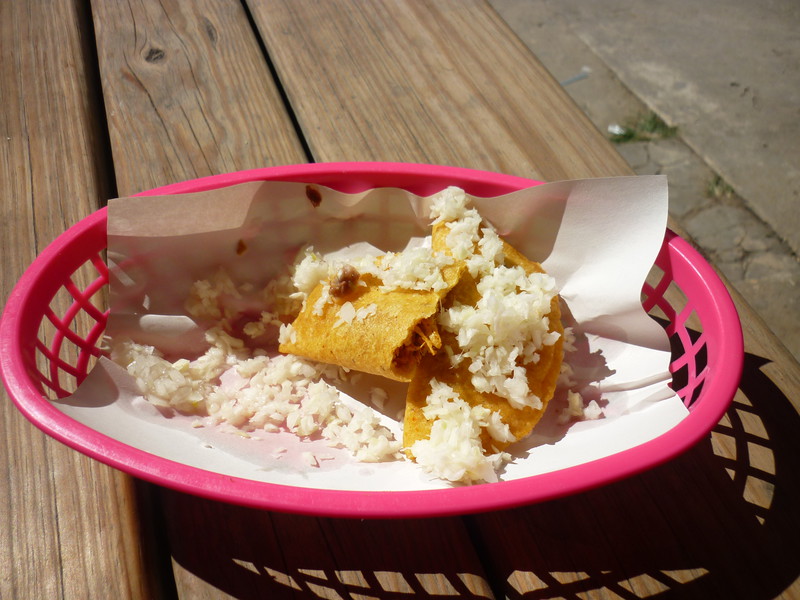
San Ignacio is also home to a large market, which we caught the tail end of on the Saturday we arrived, though it was closing up at the time; and it's also near to the confluence of the Macal River and the Mopan River, which is where the Belize River starts. We also fell in love with the restaurants, in particular a Mayan restaurant called Ko-Ox Han-Nah ('Let's Go Eat' in Mayan), which served consistently excellent food at good prices. Finally, after the disappointing food of Mexico, and the slightly monotonous fish-based restaurant fare of Caye Caulker, we've found some food that's worth writing about. Well done San Ignacio, you came good in the end.